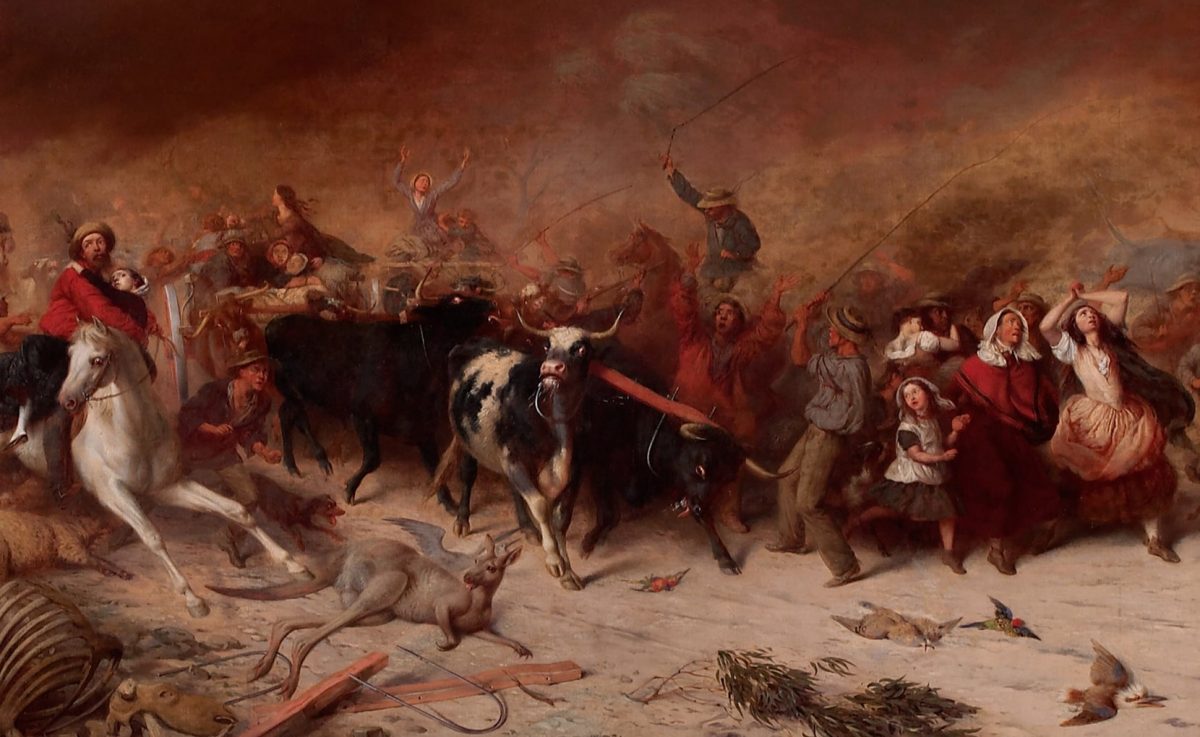Black Thursday
‘When the smoke turned day into night’
William Strutt depicts the bushfires which engulfed Victoria on Black Thursday, 6 February 1851. The city of Melbourne was filled with dust, smoke and a rain of cinders, the glow of which could be seen from far out at sea.
“I can never forget the morning of that scorching Thursday, ever after memorable in the annals of the Colony as “Black Thursday”. The sun looked red all day, almost as blood, and the sky the colour of mahogany. We felt in town that something terrible must be going on up country and sure enough messenger after messenger came flocking in with tales of distress and horror.”
William Strutt in his journal.
Widespread bushfires covered a quarter of Victoria, approximately 5 million hectares. Approximately 12 lives, one million sheep and thousands of cattle were lost.
After an intense drought throughout 1850 and extreme heat, the weather reached record extremes. By eleven it was about 47 °C (117 °F) in the shade. The air cooled to 43 °C (109 °F) by one o’clock and rose to 45 °C (113 °F) around four o’clock. A strong furnace like wind came from the north and gained power and speed as the hours passed. The hot north wind was so strong that a ship at sea came under burning ember attack and was covered in cinders and dust.
Bushfires become possible, because of inappropriate landscape management by settlers. The people, who for tens of thousands of years had maintained tracts of walkable land and hunting grounds, where displaced by sheep eating the yams, which they cultivated as a major food source.
